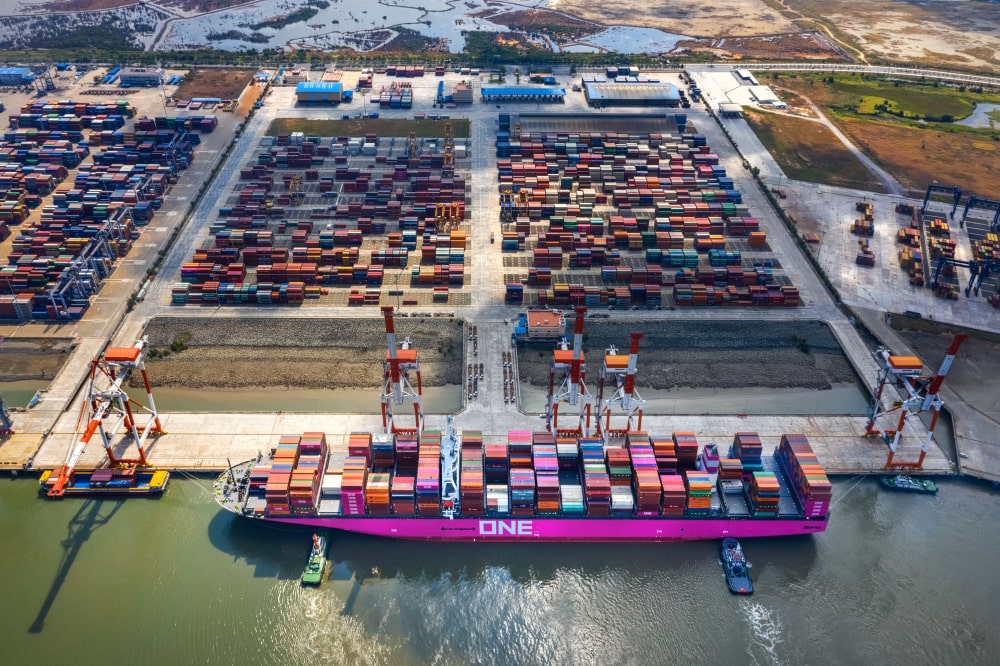
Republished with the kind permission of Insurance Day
From a business point of view, if Christmas did not exist it would be necessary to invent it. Getting into the Christmas spirit has been important for a few thousand years but as we head into the 2021st festivities, having a successful Christmas is becoming a question of maintaining business viability for many commercial enterprises. Any disruption to this year’s celebrations could prove terminal for many businesses currently on life support.
Nearly every week, around the world there are headlines warning about impending trade disruption. In fact, while I write this article, there are dire headlines that proclaim on the potential impact of the Felixstowe port delays on the upcoming Christmas shopping season.
Russell Group recently conducted some analysis into this disruption. We learnt through our risk models that £1.5 billion dollars of UK trade imports into Felixstowe may be disrupted as a result of the delays.
Clothing, we discovered, was the largest commodity impacted by the delays creating further supply chain headaches for companies and consumers alike. This disruption isn’t just limited to the UK but is a global phenomenon.
The USA is blocked by port congestion at Long Beach and Los Angeles with countless numbers of ships delayed from entering these shipping hubs. In response to this crisis, the Biden Administration declared that both ports will move to being open around the clock in order to move containers. Meanwhile, a combination of natural weather events and COVID have resulted in large ports like Shanghai and Ningbo in China being closed for significant periods of time.
The mainstream media has focused more recently on nodes in the supply chain where container ships are unloaded in US or European ports. As we have pointed out in a series of reports this year, however, the current problems highlight that global trade is increasingly dependent on an interlinked sequence of supply and manufacturing operations working smoothly, which creates a connected risk as the world has come to rely on a smaller number of very large key pinch points.
The US is not the only superpower that is suffering as across the Pacific, there are an increasing number of backlogs at Chinese factories and ports. These supply chain challenges are raising further concerns about the ability of enterprises to adapt to a new normal that many are not equipped to adapt to in such a short space of time.
Shipping industry observers responding to US President Biden’s pronouncements on the supply chain difficulties we are witnessing today believe that it will need more than 24-hour operations at Long Beach, Port of Los Angeles, or their end route destinations at Walmart or Target, to smooth out the supply chain bumps.
There are other challenges that impact the ability to export goods out of China, ranging from backlogs as a result of the Covid-19 closure and controls at the ports, the recent Golden Week holiday, and the impact of Typhoon Chanthu, which temporarily closed the ports at Shanghai and Ningbo. Meanwhile, Chinese firms are confronted with a power-shortage crisis because of coal shortages and ensuing government electricity rationing.
Also, the COVID pandemic has aggravated the disruption in two ways. Firstly, tightening restrictions at ports has increased the time spent loading and offloading containers from ship to port. As a result, many ships left their containers at port, returning to their port of origin where they picked up new containers.
This feeds into the second cause of the disruption, which is that increasing online consumer shopping demand for items such as new laptops and PlayStation5 has created a surge in demand that many ports are not equipped to manage. The phenomenon of trade disruption is a direct result of the fact that global trade has become more concentrated over the last few years, within certain ports.
Our analysis shows that more than $7.5 trillion of global trade now flows through 50 key ports, which is roughly 50% of all global trade. So, you could reasonably argue that the health of global trade can be monitored via these ports, and if any one of these ports suffer a form of delay or blockage then the entire global economy would suffer from the fallout, with delays for businesses and consumers.
Many businesses and indeed (re)insurers may think, so what? What’s the use of having all this data that tells me and my client the flow of trade at a port at any given time? How can this help my business and indeed my clients?
I would say that assessing trade is essential in order to maintain a competitive business advantage in today’s ever changing business landscape. Through a strong understanding of trade flows whether it be at a country, company or commodity level, any business can conduct a thorough assessment of their exposures from such disruptions
This knowledge enables business to make real-time adjustments to their portfolios and remain viable in the long term. Those businesses and (re)insurers that have the imagination to act boldly will be the ones who succeed in this difficult trading environment.